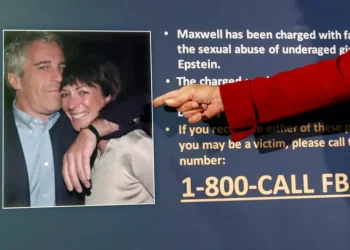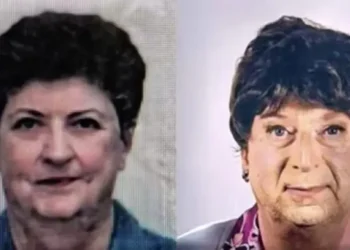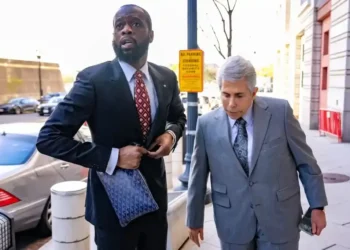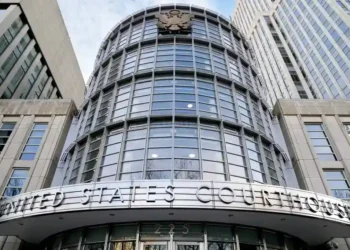AI Brings Murder Victim’s Voice to Courtroom in Road Rage Case, Sparking Ethical Debate
In a groundbreaking moment for both the legal world and the role of technology in justice, Stacey Wales used artificial intelligence (AI) to have her deceased brother, Christopher Pelkey, speak at the sentencing of his killer in a road rage incident. The decision was a deeply personal one for Wales, who had spent years crafting a victim impact statement. But she realized that no matter how carefully worded her statement was, it could never truly capture her brother’s humanity and what he would’ve said himself.
Determined to give Pelkey a voice, she and her husband, both tech professionals, took a bold step: they created an AI-generated video of Pelkey, using his likeness and voice to deliver the message she had written. The video played at the sentencing hearing for Gabriel Paul Horcasitas, the man who shot Pelkey in November 2021, and in it, Pelkey expressed a message of forgiveness to his killer—something Wales knew her brother would have done, though she wasn’t yet ready to do herself.
A Moving Moment in the Courtroom
The AI version of Pelkey delivered the statement in a tone that, although slightly robotic, captured his essence. In the video, Pelkey acknowledged the tragedy of his death, saying, “It is a shame we encountered each other that day in those circumstances. In another life, we probably could have been friends.” His voice, recreated by AI, spoke of a forgiveness that touched the courtroom.
Judge Todd Lang, moved by the video, remarked, “As angry as you are and justifiably angry as the family is, I heard the forgiveness.” Pelkey’s killer was sentenced to 10.5 years for manslaughter and an additional 2 years for endangerment.
The Use of AI in Legal Settings
This marks a significant, possibly unprecedented, use of AI in the courtroom. Legal experts are watching closely as AI begins to play an increasing role in both criminal justice and legal processes. This incident has raised critical questions about the ethical and practical implications of using technology to replicate deceased individuals. Is it an effective tool for bringing humanity into legal proceedings, or does it risk distorting the emotional weight of justice?
Paul Grimm, a Duke University law professor, commented on the potential influence of AI in legal settings, stating, “These kinds of technologies have tremendous impact to persuade and influence… we’re always going to have to balance whether or not it is distorting the record.” As AI becomes more advanced, the legal world will need to navigate the fine line between innovation and fairness in courtrooms.
The Emotional and Legal Complexities
For Wales, the decision to use AI was part of her grieving and healing process. Pelkey’s autopsy photos and footage from his death had already been shown in court, but Wales wanted the judge to see her brother as he was in life. It was a way to present his humanity beyond the tragedy of his death. She and her husband, who are both involved in tech, used AI software to create the video, training it with old photos and videos of Pelkey.
Though the defense team did not receive prior notice about the use of AI in the victim’s statement, the judge did not object. Pelkey’s defense attorney, Jason Lamm, has expressed concerns, noting that the introduction of AI may influence the judge’s sentencing, a matter that could be raised in an appeal.
Navigating AI’s Role in Legal Cases
The legal world is still adjusting to the presence of AI-generated content in courtrooms. While some judges have been open to incorporating AI in limited ways, there are growing concerns about its use. A recent incident in New York saw an appellate judge shut down a request for an AI-generated avatar to present a legal case, highlighting the challenges in ensuring transparency and accuracy in AI’s application.
Critics warn that AI could introduce biases into court proceedings, potentially portraying a party in a more sympathetic light or influencing a judge or jury’s emotions. Experts suggest that in the future, AI-generated content should be reviewed by opposing counsel before being introduced as evidence or in victim impact statements.
Wales herself acknowledged the importance of using AI responsibly. “This was not evidence; the jury never saw this. It wasn’t even made before a verdict came down,” she said, emphasizing that the video was an opinion, not part of the official trial. The AI was simply a way to allow her brother to be present in the courtroom, even though he could not physically be there.
A Healing Moment for the Family
For Wales and her family, the AI video provided a sense of closure and connection. After the hearing, her 14-year-old son told her, “Thank you so much for making that. I needed to see and hear from Uncle Chris one more time.” It was a bittersweet moment that captured the complex relationship between technology, grief, and justice.
As AI continues to evolve, its role in the courtroom will undoubtedly be a topic of ongoing debate. Whether it can become a tool for justice or a source of legal complications remains to be seen. But in this case, for Stacey Wales, the technology gave her brother a chance to speak one last time—and that, she says, was healing for her and her family.
This article was rewritten by JournosNews.com based on verified reporting from trusted sources. The content has been independently reviewed, fact-checked, and edited for accuracy, neutrality, tone, and global readability in accordance with Google News and AdSense standards.
All opinions, quotes, or statements from contributors, experts, or sourced organizations do not necessarily reflect the views of JournosNews.com. JournosNews.com maintains full editorial independence from any external funders, sponsors, or organizations.
Stay informed with JournosNews.com — your trusted source for verified global reporting and in-depth analysis. Follow us on Google News, BlueSky, and X for real-time updates.














